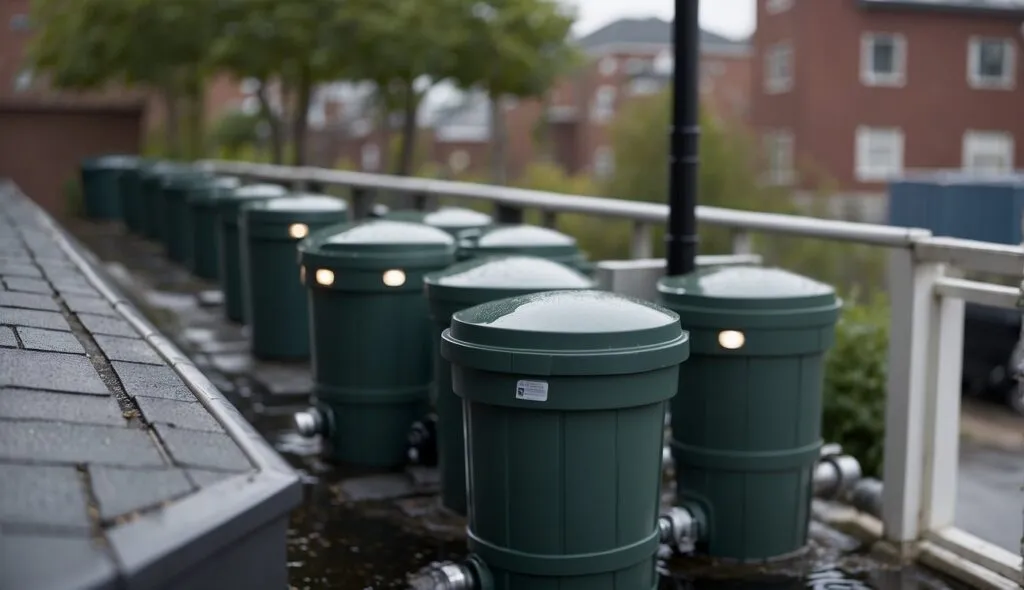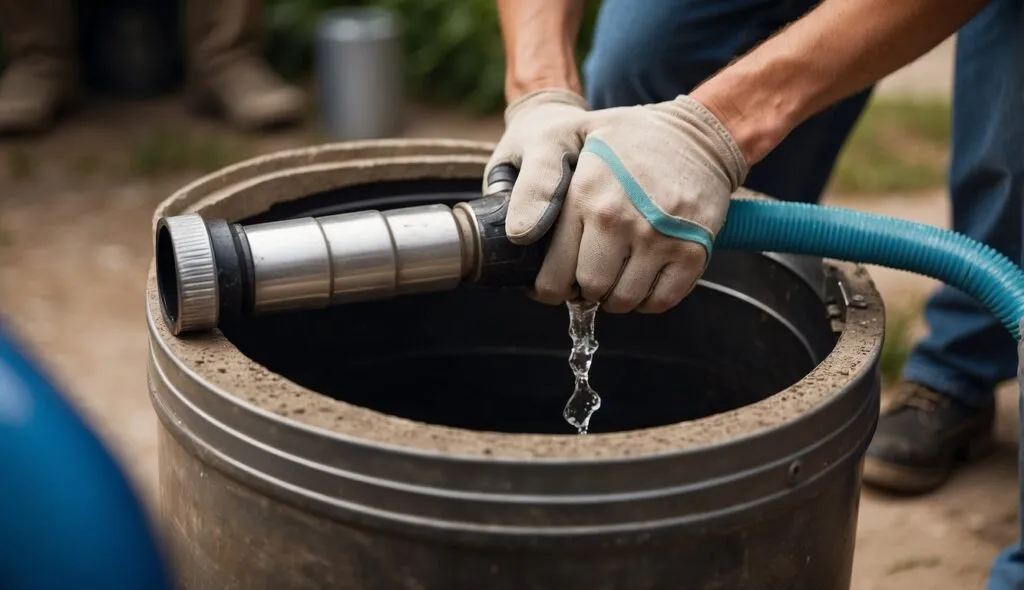Rainwater harvesting is a sustainable and environmentally friendly way to conserve water in urban areas. One of the most popular methods of rainwater harvesting is setting up a rain barrel system. By collecting and storing rainwater, homeowners can reduce their water bills and help to conserve water resources.
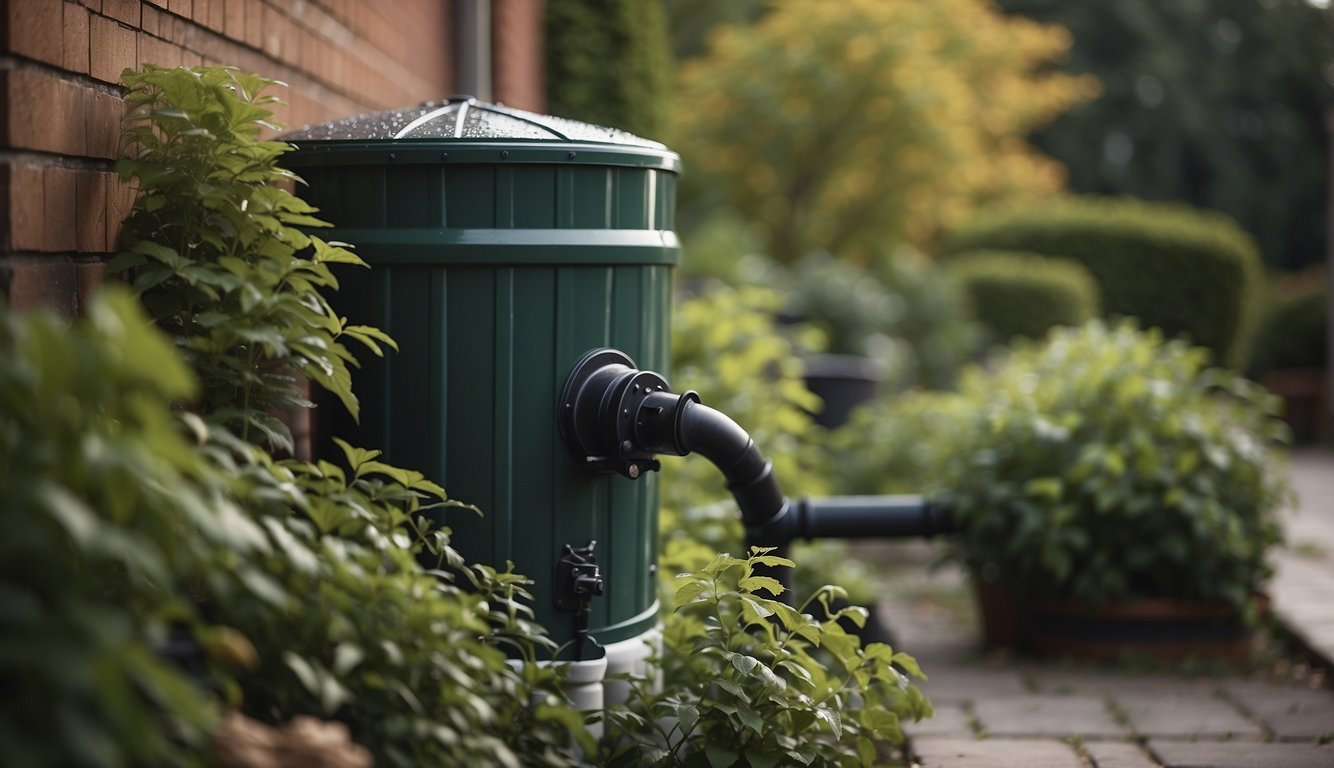
Planning your rain barrel system is the first step in the process. Consider the size of your roof and the average rainfall in your area to determine how much water you can collect. Choose a location for your rain barrel that is close to a downspout, and make sure the ground is level. Once you have your plan in place, it’s time to move on to the installation process.
Table of Contents
Key Takeaways
- Rainwater harvesting is a sustainable and environmentally friendly way to conserve water in urban areas.
- Planning your rain barrel system is the first step in the process.
- Regular maintenance and troubleshooting can help ensure that your rain barrel system operates efficiently.
Planning Your Rain Barrel System
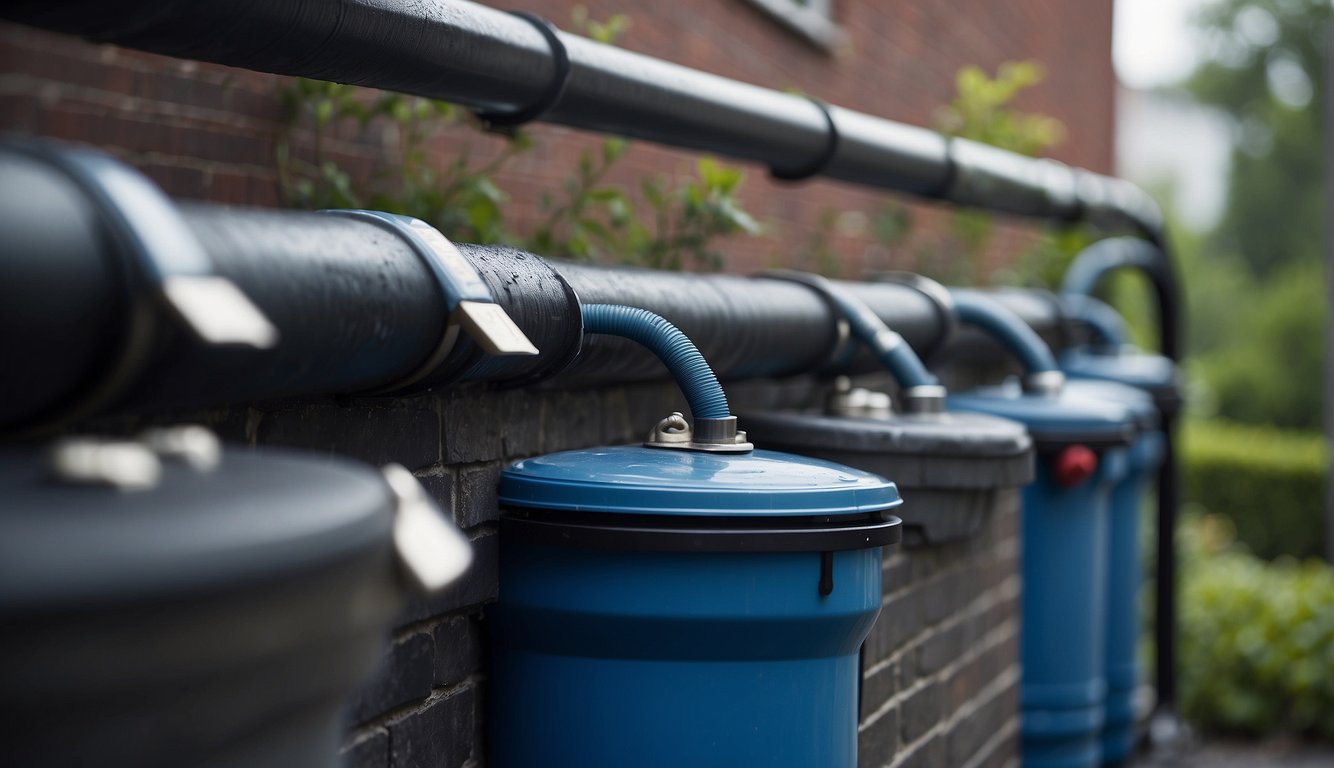
When setting up a rain barrel system in an urban area, there are several factors to consider. In this section, we will discuss the location and materials you will need to create an efficient and effective system.
Selecting the Right Location
The first step in planning your rain barrel system is to select the right location. You will want to choose a spot that is close to the area you want to water, such as your garden or lawn. The location should also be close to a downspout on your roof, so you can easily collect rainwater.
When selecting a location, it is important to consider the catchment area. This is the area of your roof that will collect rainwater and direct it to your rain barrel. The larger the catchment area, the more rainwater you will be able to collect. You should also consider the slope of your roof, as a steeper slope will allow for better water flow.
Choosing Barrels and Materials
Once you have selected a location, you will need to choose your rain barrels and materials. There are many different types of rain barrels available, including plastic, metal, and wooden barrels. Plastic barrels are lightweight and easy to install, while metal barrels are more durable and can last for many years.
When choosing materials, it is important to consider the size of your rain barrel system. A larger system will require more materials, such as additional barrels and connectors. You should also consider the type of connectors you will need, such as downspout elbows and flex connectors.
In addition to rain barrels and materials, you may also want to consider adding a filter to your system. A filter can help remove debris and contaminants from the rainwater, making it safer for plants and animals.
Overall, planning your rain barrel system is an important step in creating an efficient and effective system. By selecting the right location and materials, you can create a system that will provide your garden or lawn with the water it needs, while also conserving water and reducing your water bill.
Installation Process
Setting up a rain barrel in your urban garden is a great way to conserve water and reduce your environmental impact. The installation process is relatively simple and can be completed in just a few hours with the right tools and materials.
Preparing the Base
The first step in installing your rain barrel is to prepare a stable base. You can use a variety of materials to create a base, including concrete blocks, cinder blocks, pavers, and landscaping blocks. The key is to ensure that the base is level and can support the weight of the full rain barrel.
Once you have your base in place, you can assemble the stand that will hold the rain barrel. The stand should be placed on top of the base and secured in place with screws or bolts.
Connecting to the Downspout
The next step is to connect the rain barrel to the downspout on your gutter system. You will need a downspout diverter to direct the flow of water from the downspout into the rain barrel. The diverter should be installed at the top of the downspout and connected to the rain barrel with a connector and bulkhead fitting.
To create a hole for the bulkhead fitting, you will need a hole saw. Once the hole is drilled, you can insert the bulkhead fitting and secure it in place with teflon tape. The connector can then be attached to the bulkhead fitting and the downspout diverter.
Ensuring System Stability
Finally, it is important to ensure that your rain barrel system is stable and secure. This can be done by adding additional support to the stand or platform, or by securing the rain barrel to the stand with straps or brackets.
You should also install a ball valve at the base of the rain barrel to control the flow of water. This will allow you to easily connect a hose or watering can to the rain barrel when you need to water your plants.
By following these simple steps, you can set up a rain barrel system in your urban garden that will help you conserve water and reduce your environmental impact.
Optimizing Water Usage
When setting up an urban rain barrel system, it is essential to optimize water usage. This involves maximizing rainwater collection and implementing efficient water distribution methods.
Maximizing Rainwater Collection
To maximize rainwater collection, ensure that the rain barrel is placed in an area where it can collect as much rainfall as possible. This can be achieved by placing the barrel under a downspout or gutter. It is also important to ensure that the barrel has an overflow outlet and an overflow hose to prevent water from overflowing and causing damage to the surrounding area.
Using multiple rain barrels is another way to maximize rainwater collection. This can be achieved by connecting several barrels with a hose outlet. Gravity can be used to distribute water evenly to each barrel.
Water Distribution Methods
There are several water distribution methods that can be used to optimize water usage. One method is to use a watering can. This is a simple and efficient way to water plants and gardens. It also allows for precise watering, which can help conserve water.
Another method is to use irrigation. This involves using a hose to distribute water to plants and gardens. It is important to ensure that the hose has adequate water pressure to ensure efficient water distribution. Using a timer can also help conserve water by ensuring that plants and gardens are only watered when necessary.
In conclusion, optimizing water usage is essential when setting up an urban rain barrel system. This involves maximizing rainwater collection and implementing efficient water distribution methods. By following these guidelines, we can ensure that we are using water efficiently and effectively.
Maintenance and Troubleshooting
As with any system, regular maintenance is key to keeping your rain barrel functioning properly. Here are some tips to help you keep your system in good working order.
Regular Cleaning and Inspection
We recommend cleaning your rain barrel at least once a year to prevent sediment buildup and ensure proper water flow. To clean your barrel, follow these steps:
- Disconnect the barrel from the downspout and empty all water.
- Remove the screen cover and wash it with a hose or in a sink.
- Use a scrub brush and mild soap to clean the inside of the barrel.
- Rinse the barrel thoroughly with a hose.
- Reattach the screen cover and reconnect the barrel to the downspout.
Regular inspection is also important to catch any potential issues early. Check your rain barrel for leaks, cracks, or other damage. If you notice any issues, address them promptly to prevent further damage.
Dealing with Leaks and Overflow
If you notice a leak in your rain barrel, it’s important to address it as soon as possible to prevent water loss and potential damage to your property. Here are some steps to take if you encounter a leak:
- Check the overflow valve to ensure it is functioning properly. If it is stuck or clogged, clear any debris and test the valve.
- Check the screen cover for damage or debris that may be preventing proper water flow.
- Inspect the barrel for cracks or other damage. If you find any, repair them promptly.
- If the leak persists, consider replacing the barrel.
In some cases, you may encounter overflow issues with your rain barrel. To prevent overflow, ensure that your barrel is properly sized for your roof area and that the overflow valve is functioning properly. If you still experience overflow, consider adding a second barrel or redirecting overflow to a rain garden or other permeable surface.
By following these tips for maintenance and troubleshooting, you can keep your rain barrel system functioning properly for years to come.
Conclusion
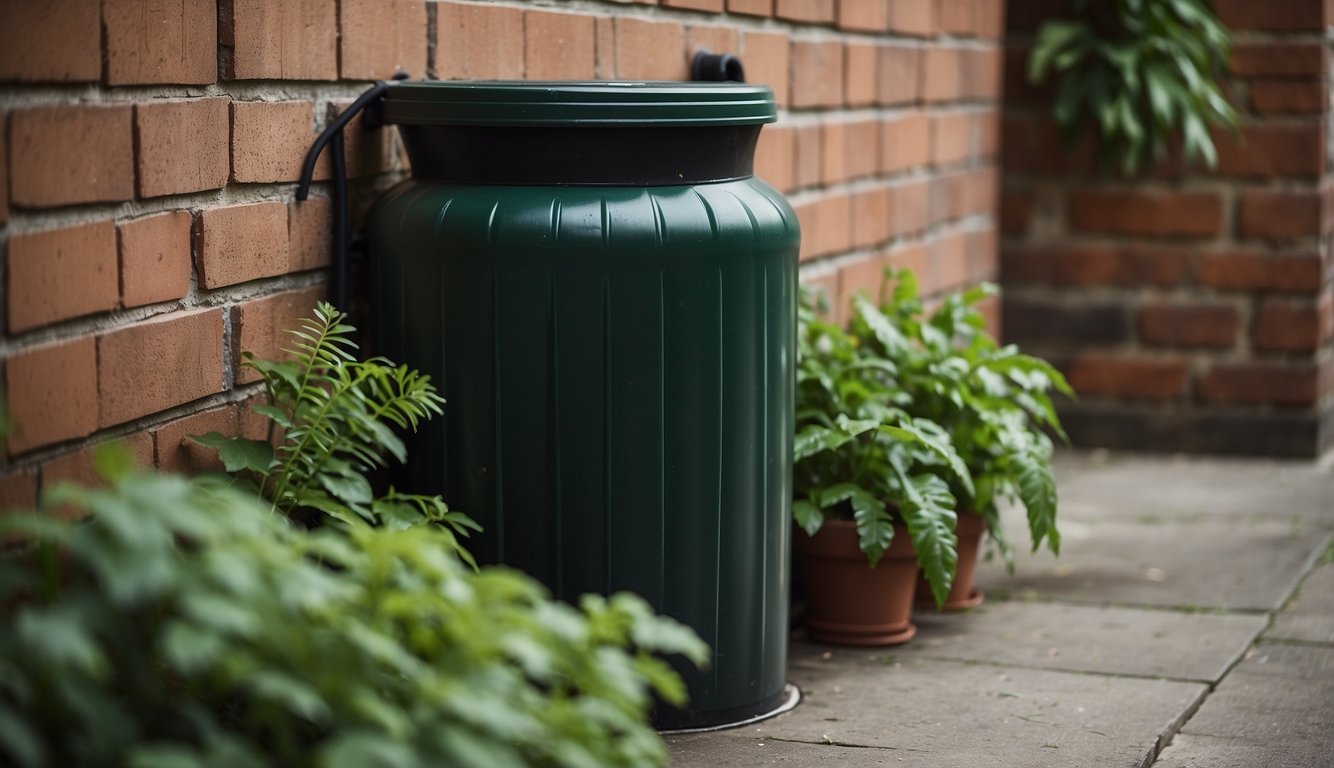
In conclusion, setting up a DIY rain barrel system is an excellent way to conserve water and reduce your water bills. By collecting free water from stormwater runoff, you can use it for non-potable uses like watering your plants and garden.
To build your own DIY rain barrel, you will need a few essential tools like a drill, screwdriver, and ladder. You will also need a food-grade barrel, which you can elevate to increase the pressure and capacity of your rain barrel setup. It’s important to use a food-grade barrel to avoid any chemicals or chlorine that may be present in municipal water.
To set up your rain barrel, you will need to attach a tap or spigot to the bottom of the barrel using a connector kit. You can also use flexible downspout tubing to connect the downspout to the rain barrel. Make sure to winterize your rain barrel by draining it and disconnecting the downspout attachment before the cold weather sets in.
Overall, a DIY rain barrel system is a simple and effective way to conserve water and reduce your water bills. By collecting free water from stormwater runoff, you can use it for your watering needs without relying on municipal water.
Frequently Asked Questions
How do you install a rain barrel diverter for efficient water collection?
Installing a rain barrel diverter is a simple process that involves attaching it to the downspout of your gutter system. The diverter will direct water from the downspout into the rain barrel, allowing you to collect and store it for later use. It is important to choose a diverter that is appropriate for your gutter system and the size of your rain barrel. You can find a variety of rain barrel diverters at hardware stores or online retailers.
What are the best practices for setting up a rain barrel system in an urban setting?
When setting up a rain barrel system in an urban setting, it is important to consider the space available and the local regulations. Most cities have regulations regarding rain barrel use, so it is important to check with your local government before installing one. It is also important to choose a location that is level and stable, and to ensure that the rain barrel is securely anchored to prevent it from tipping over.
How can you connect a rain barrel to a downspout for optimal water capture?
Connecting a rain barrel to a downspout is a simple process that involves cutting the downspout and attaching a diverter. The diverter will direct water from the downspout into the rain barrel, allowing you to collect and store it for later use. It is important to choose a diverter that is appropriate for your gutter system and the size of your rain barrel. You can find a variety of rain barrel diverters at hardware stores or online retailers.
What is the recommended elevation for a rain barrel to ensure proper water pressure and flow?
The recommended elevation for a rain barrel is at least 1 foot off the ground. This will ensure proper water pressure and flow from the spigot at the bottom of the barrel. It is also important to ensure that the rain barrel is level to prevent it from tipping over.
Are there any resources for obtaining a free rain barrel in city areas?
Some cities offer free rain barrels to residents as part of their water conservation efforts. Check with your local government to see if they offer this program. Additionally, some hardware stores or online retailers may offer discounts or rebates for rain barrel purchases.
How should one manage overflow from a rain barrel to prevent waterlogging?
Managing overflow from a rain barrel is important to prevent waterlogging and potential damage to your property. One option is to install an overflow hose that directs excess water away from your home’s foundation. Another option is to install a second rain barrel that is connected to the first one with an overflow hose. This will allow you to collect even more water while preventing overflow.

